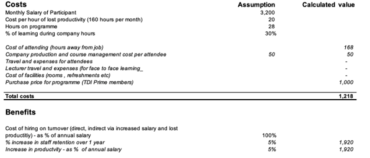Dynamis – If Insurance, Then Blockchain
Back to the Future
Who remembers the Nokia 7110? It was launched in 1999 in the days when a mobile phone was just a phone. It was not very smart but did what it said on the tin!

What has this got to do with P2P Insurance and blockchain?
You see, at that time there was much talk about the limitless possibilities of having data on your phone (which of course has turned out to be true). But in 1999, when it came to realizing the promise, the first manifestation of mobile data was the 7110.
And it was very limited in its usability.
This is what Gartner describe in the Hype Cycle, when the peak of inflated expectations leads quickly into reality and the trough of disillusionment.
We’re at an equivalent point in the blockchain life-cycle. There are promises of great things from the tech and of how autonomous organisations will be run on computer code with little or no human intervention.
The same can be said for the 3rd Wave of P2P Insurance, aka “self-governing” insurance. The promise of self-governing peer networks has yet to be market-proven, but the allure of technology enabled transparency, near-friction less operations and even Premium-Free Insurance is enticing a new breed of InsurTech start-ups into this space.
Whereas blockchain is getting close to the peak, P2P Insurance still has a way to go before it hits the top of the curve.
Just like the Nokia 7110, when P2P insurance on blockchain hits the market, the products will be simple, with limited liabilities and an easy payout process.
Smart Contracts on a blockchain
Last year’s London Fintech Hackathon gave us InsurETH. The team was led by Thomas Bertrani of Oraclize and they built a blockchain smart contract for paying out on flight delays. I won’t recount the story as it has been told many times, including by myself here.
The point is that this was a very simple insurance product with a limited liability and an easy payout process.
IF {flight is delayed 4 hours} THEN {pay Rick £100}
Simple, limited liability, no fuss payout.
On my own personal journey to understand the implications of blockchain for insurance, one of the people who have helped me along the way is Joshua Davis, the CEO and founder of Dynamis.
Dynamis is a Peer-to-Peer Insurance Company, built on the Ethereum decentralized blockchain platform. In his words, Joshua positions the importance of blockchain tech;
“What the Internet did to liberate information, blockchain technology is now doing to facilitate agreements.
And it starts here with a white paper Joshua wrote over a year ago on how smart contracts could work for insurance. The insurance use case in the white paper is for auto glass/windscreen replacement.
Joshua goes into great detail about both the technical and the business application of the Ethereum blockchain platform to provide an insurance smart contract.
He also explains how the Decentralized Autonomous Organization (aka, the “DAO”) works to deliver the smart contract. It is a worthwhile read and still relevant today.
Using Social Profiles to validate customers and claims
Joshua is now putting the theory into practice and building his first insurance product with Dynamis; supplemental employment insurance.
Joshua explained; “Dynamis is a smart contract for peer-to-peer (P2P) insurance that provides supplementary unemployment cover. The platform uses keybase.io to establish the customer’s identity by using either their github, reddit or twitter social media profiles.
“Applicants for a new policy link their keybase account into Dynamis and this becomes the basis of verifying their online identity. Their online social media fingerprint is the basis for their interaction with others in the network.
“Each customer’s social graph identifies them as a unique individual. With keybase, their online identity is tied to a powerful cryptographic signing tool which allows them to make statements about their employment status which are unable to be repudiated.
“In this way, customers can use their social capital within their own social network to both obtain policy cover and also open up a claim.”
“Lies not only hurt your social capital they also alert the community of your peers who can then use a prediction market mechanism to bet against your claim and alert the Dynamis community when fraud is occurring.”
The 3rd Wave of P2P Insurance
Dynamis will operate as a peer-to-peer network in a self-governing model, which I refer to as the 3rd Wave of P2P Insurance. To ensure the model operates fairly, Dynamis will limit its initial group of invites to approximately 200 people who will bootstrap the system’s local pool and risk assessment model.
Similar to the Teambrella model (covered here), the network incentivises expert peers to effectively underwrite insurance policies by placing bets on the possible outcome of claims. This process requires both the insured (policyholders) and the insurer (risk assessors) to put up deposits which are returned relative to how accurate their predictions ended up being with regard to a future claim.
These expert peers assist with pricing policies and evaluating future claims without the massive cost overheads of traditional insurers.
Joshua explained; “So long as we have something that is easy to determine and there is a really good record of what actually happened, such as flight delays, crop insurance, income protection, then we can make the insurance product simple to administer.”
Protecting the customer
As the 2nd and 3rd waves of P2P Insurance models come into the market, there are many unanswered questions about how they will work in practice. Particularly, questions around solvency and the honoring of liabilities within a network. Similar questions were raised recently by Quebec’s financial sector regulator voiced concerns.

“In Dynamis, we use a DAO to manage all insurance funds and this protects the peers from fraud”, explained Joshua. “This is because, with P2P payments and escrows, there is no need for trust in a central entity. The creation of a DAO is very difficult to initialize and there is no working (fully autonomous) DAO functioning on any major cryptocurrency platform today.
“But what we’re really doing is taking insurance back to where it started. The very first types of insurance, such as insuring a cargo ship, was Peer-to-Peer. Back then, people simply traded equity in each other’s assets to give themselves some financial cover in the event of a loss.”
Smart Contracts in a Self-Governing Peer Network
And this gets to the nub of how these early P2P models will work. Just like the 7110, the first insurance products on blockchain technology, that use Smart Contracts in a self-governing peer network, will be simple.
They will have limited liability and be binary in nature. The flight is delayed or not. Rainfall has exceeded a threshold or it hasn’t. Yes or No. Black or White.
The insurance policy will still be subject to the same contract laws that govern all agreements in a jurisdiction. All parties will be bound by the terms of the agreement, just as they are today. (See here for an easy introduction to Smart Contracts)

The Dynamis prototype is scheduled for later this year. And then we will be able to see for ourselves!
The author, Rick Huckstep, is an advisor, speaker & InsurTech thought leader, and editor of InsurTech Weekly for The Digital Insurer.


























































Comments